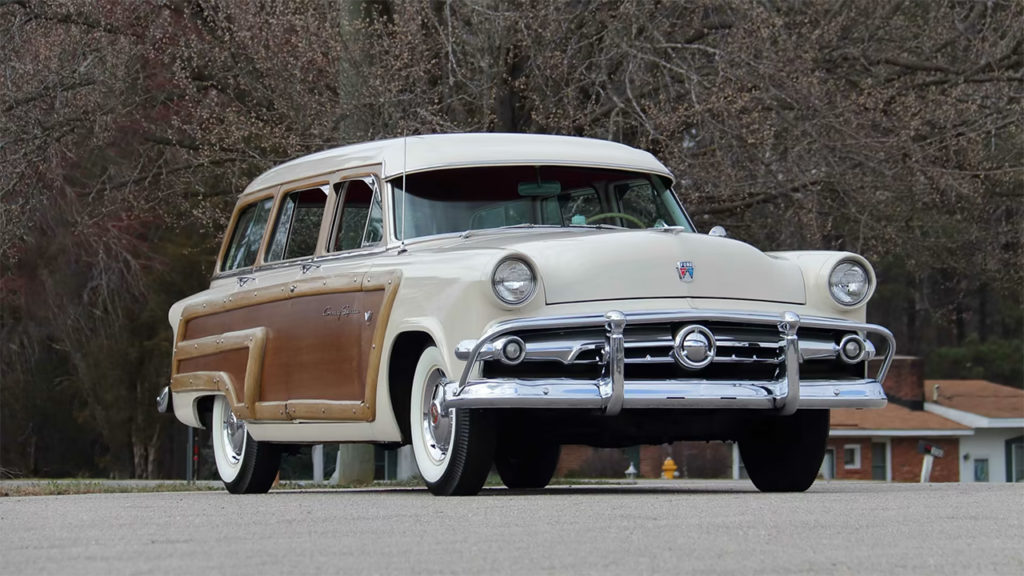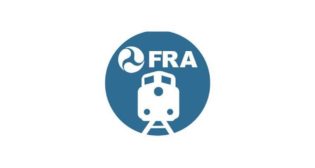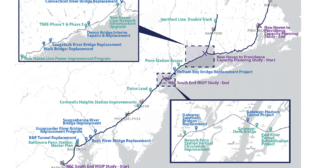
‘Dear Mr. Tilley’
Written by Stephen Gardner, Chief Executive Officer, Amtrak
Amtrak CEO Stephen Gardner
Amtrak has “allowed its long-distance train fleet to shrink.” Amtrak has not removed any serviceable long-distance equipment from its fleet. As I explained in my June 29 letter, the reasons we have fewer long-distance cars in our active fleet today than we did in 2019 are:
- The COVID-19 pandemic, whose severe impacts on Amtrak’s workforce and finances impaired our ability to perform major repairs and federally mandated periodic overhauls on our equipment.
- A major derailment in 2020, a 2021 grade crossing accident, and several other incidents that damaged approximately 50 Superliner cars.
- Lack of funding to acquire new fleet. While Amtrak identified the need for increased federal funding to replace our long-distance equipment fleet in the 2010 report you reference, the necessary funding was not provided until enactment of the Infrastructure Investment and Jobs Act (IIJA) in November 2021.
Amtrak’s procurement of new long-distance equipment “isn’t off the drawing board.” The procurement, initiated shortly after the IIJA was enacted, is well under way—as you indicate in your letter, we issued a Request for Proposals (RFP) in December.
Amtrak needs a plan for meeting equipment requirements for long distance service until new equipment arrives. Amtrak’s Five-Year Plans for our Equipment Asset Line and Long-Distance Service Line will be published shortly and made available on Amtrak.com. In order to increase long-distance passenger capacity, Amtrak is:
- Restoring to service long-distance cars that require major repairs or have been stored awaiting overhauls (We currently project that more than 70 inactive cars, 23 of which have already been completed, will be returned to service by September 2025).
- Working to resolve shunting problems on some host railroad lines that have necessitated operation of Superliner cars on several state-supported routes.
- Evaluating changes in equipment assignments and improvements in equipment utilization.
Amtrak is “re-invent[ing] the entire concept of long distance passenger trains.” Reinventing long-distance train travel is our vision—and a necessity if we are to meet customer needs and expectations and increase long distance ridership. Amtrak’s current bi-level long-distance cars, the Superliners, reflect the design of the first Hi-Level Cars built for the Santa Fe Railway in 1954, the same year as the Ford station wagon depicted below. That bi-level design was last updated in the early 1990s when Amtrak ordered the Superliner II cars.

As with automobiles, many things about long-distance travel and passenger railcars have changed in the intervening decades. The most significant changes impacting Amtrak’s long-distance equipment include:
- New requirements for accessibility pursuant to the Americans with Disabilities Act (ADA).
- Adoption of new regulations for passenger railcar safety.
- The need to incorporate a multitude of new technologies and features to meet operational and customer requirements, such as remote component condition monitoring devices, elevators and Wi-Fi antennas.
- The evolving preferences of our passengers, who have very different expectations and needs than train travelers of 30 to 70 years ago.
Amtrak’s long-distance procurement will require long lead times: That iscorrect—and why we are projecting that deliveries of new long-distance equipment will begin in the early 2030s. In addition to the challenges associated with any procurement of newly designed passenger railcars, our long-distance service requires unique, custom-built equipment and U.S. passenger railcar manufacturing capacity is limited.
Amtrak’s specifications for new long-distance equipment are overly detailed. Detailed specifications are necessary to ensure that new equipment meets Amtrak and regulatory requirements and customer expectations, and to avoid costly and time-consuming change orders that would delay equipment deliveries.
As for the five “Contingency Options” that you suggest Amtrak consider, none is a viable alternative to our currently under way procurement of new long-distance equipment built in the United States.
- Amtrak could remanufacture its existing long distance fleet, as VIA Rail Canada has done: Amtrak intends to restore to service all passenger-carrying long-distance cars that require deferred overhauls or that can be economically repaired. Because of that, remanufacturing in-service cars would actually reduce our active long-distance equipment fleet by diverting limited financial and Mechanical resources from overhauls and major repairs and requiring that active cars be taken out of service for extended periods. As I explained in my June 29 letter, spending millions of dollars per car to remanufacture cars that are already 40-45 years old is not a viable alternative to acquiring new equipment. VIA Rail Canada’s decision to remanufacture its long-distance equipment that you cite in your letter—made at a time when that equipment was newer than Amtrak’s Superliner I and Amfleet II cars—was driven by the fact that VIA lacked funding for new equipment. As VIA emphasized in its 2015 Corporate Plan, rebuilding VIA’s passenger cars that then averaged 43 years of age (the same age as the newest of Amtrak’s Superliner I cars) was not a viable alternative to acquiring new equipment:
Rebuilding aging rolling stock could only be a temporary solution that does not necessarily save money in the long run. Investing in new and modern equipment is an element necessary to support the development of passenger rail and its growth. (VIA Rail Canada, Summary of the 2015-2019 Corporate Plan. https://www.viarail.ca/sites/all/files/media/pdfs/ About_VIA/our-company/corporate-plan/Summary_2015-2019_Corporate_Plan_June3, pp. 15-16.)
Unfortunately, VIA has not yet secured funding for new long-distance equipment. Last month, VIA held a media event to announce that, unless it is able to initiate a planned procurement for new long-distance equipment soon, it will need to curtail and eventually eliminate all of its long-distance service. (Magder, Jason, “Time is running out for Via Rail cars from a bygone era,” Montreal Gazette, Feb. 22, 2024. https://montrealgazette.com/news/local-news/via-shows-its-montreal-maintenance-centre.)
- Amtrak could acquire new equipment utilizing the Viewliner shell: Replacing the bi-level Superliners Amtrak operates primarily on Western long-distance routes with single-level Viewliner cars would not be a prudent solution even if such cars could be purchased without the considerable time required to develop new specifications and undertake a second procurement. Initial capital costs would be higher, and ongoing operating and maintenance costs would go up as well, because more cars would be needed to carry the same number of passengers. Passenger and vehicle capacity on Amtrak’s highly successful Auto Train would have to be reduced to stay within train length restrictions, negatively impacting ridership and financial performance. Single-level cars would also provide an inferior viewing experience on the scenic routes on which we operate Superliner cars, reducing ridership and revenues.
- Amtrak could use Airo trainsets for long-distance service: We are acquiring the Airo trainsets to replace equipment operating on Northeast Regional and state-supported trains that is even older than our long-distance equipment. Using Airos in long-distance service for which they are not designed would require the elimination of dining and sleeping car services. The Airos will be operate on the Palmetto, our only daytime long-distance route, and on several state-supported routes currently using long-distance equipment, which will free up long-distance equipment operating on those routes for redeployment.
- Amtrak could develop and issue a supplemental, “simpler” RFP to procure “off-the-shelf” equipment: The specifications Amtrak has developed for its new long-distance equipment reflect years of work by experts in passenger railcar design and extensive input from suppliers, Amtrak customers, and representatives of the disabled community. There is no “off-the shelf” equipment that meets the unique needs of Amtrak’s multi-day long-distance services and U.S. passenger railcar safety and accessibility requirements. Under any circumstances, suspending a procurement process that has been underway for years to develop new specifications and thereafter issue a new RFP would significantly delay delivery of new equipment Amtrak urgently needs.
- Amtrak could seek an FRA waiver and acquire foreign manufactured equipment: There is no basis for a waiver from Buy America requirements. Moreover:
- No foreign-manufactured equipment would meet Amtrak’s needs and U.S. safety and accessibility requirements. I am surprised that you would cite VIA’s acquisition of the European-built Renaissance cars as a model that Amtrak should emulate. Barely a decade after those cars entered service, VIA was already making plans to replace them—even though they were the newest cars in its equipment fleet – because of their poor reliability and carbody corrosion and difficulty in obtaining spare parts for foreign manufactured equipment.
- Manufacturing our new long-distance equipment in the United States will help develop the skilled American workforce and increased U.S. manufacturing capability the passenger railcar industry needs to fulfill future Amtrak orders for new equipment as we grow our service.
I will close by emphasizing once again what I said in my June 29 letter: The way to [address] many of the challenges Amtrak faces, including with long-distance equipment, is with adequate, ongoing and assured federal funding for intercity passenger rail service. While the significant, multi-year funding the IIJA provides has finally allowed Amtrak to acquire new equipment for all our service lines, the IIJA’s advance appropriations extend only through Fiscal Year 2026. Amtrak must also battle every year for sufficient annual appropriations to provide existing services and address urgent capital funding needs, including the major repairs and overhauls required to keep our aged equipment fleet in operation.
Unless that paradigm changes, Amtrak will continue to struggle, as we have for the past half century, with insufficient resources to provide the passenger rail service Americans want and need. Complaining about current challenges created by inadequate funding in the past is no substitute for educating policymakers about what needs to be done to allow intercity passenger rail service in the United States to realize its full potential.



